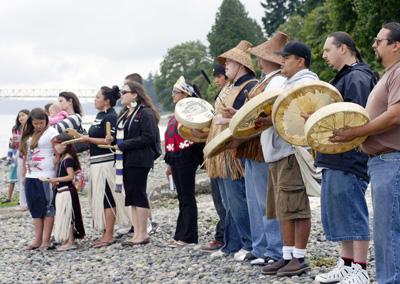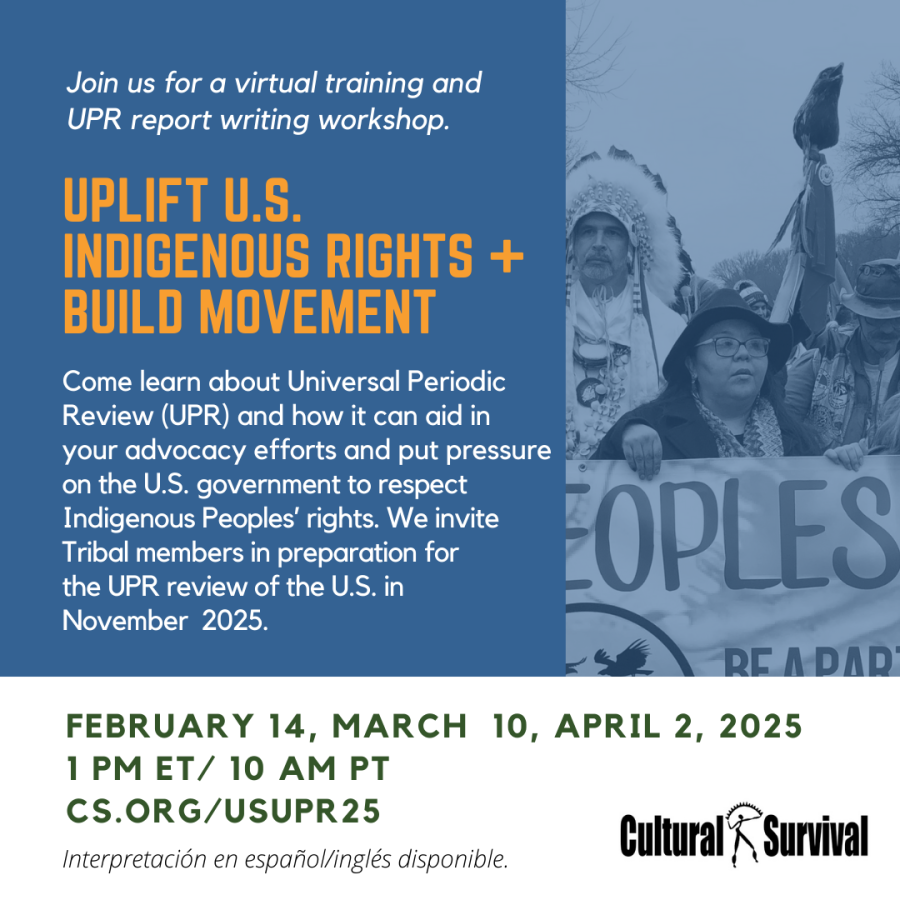
By Asia Alsgaard
This past October, the Port Gamble S’klallam Tribe was one of four other tribes to receive the Honoring Nations award for excellence in the governance, effectiveness, and sustainability for their Child Welfare Program. Awarded by the Harvard Project on American Indian Economic Development, the Port Gamble S’Klallam Tribe was one of six finalists to receive the award. To continue their line of firsts, the Port Gamble S’klallam Tribe has also recently become the first tribe to qualify for the Title IV-E waiver, which will allow them more flexibility in how “family” is defined and financial allocation.
The Honoring Nations Award came after having established a direct agreement with the U.S. department of Health and Human Services in 2012. This agreement allows the tribe to have direct control over child welfare services such as adoption and foster care services. Furthermore, the S’klallam tribe has the prerogative to try and place displaced children with close family members or with other tribal families rather than the standard of placing tribally associated children in non-Native homes. This was an important first step for the recognition of tribal rights across the United States and has changed the outcome of foster care situations for the Port Gamble S’klallam tribe. In some states, Aaliyah, a 4-year old with an absentee mother and incarcerated father, might have been placed in a non-Native home without appropriate tribal consultation. However, because of Port Gamble’s direct agreement and foster care system, Aaliyah was able to be placed with her grandmother, Juanita Holtyn instead of a family with whom Aaliyah had no connection.
This outcome is drastically different than those of the past. Jessie Scheibner, a member of the Port Gamble S’klallam Tribe born during the 1940s remembers being taken from her family on the reservation at the age of three, spending the next four years being shuffled from foster home to foster home before finally being reunited with her mother and sister at the age of seven. She would not return to the reservation until she was eighteen years old. In an interview with Jullian Sullivan, she recalled her experience, “I just existed. Nobody cuddled me, nobody would play with me. Back then there was a lot of racism.”
In response to cases like Jessie’s, the Indian Child Welfare Act was enacted in 1978, establishing guidelines for dealing with Native child welfare cases. The act was an attempt to recognize the rights of tribal governments in cases dealing with Native children; however, the process was still controlled and operated by the state. Then in 2008, the passage of the Fostering Connection to Success and Increasing Adoptions Act allowed tribal governments to apply for the ability to directly operate programs covered under Title IV-E of the Social Security Act. It would be another four years before the Port Gamble K’lallam Tribe would be the first tribe authorized to direct such a program.
The Port Gamble K’lallam Tribe saw the program authorization as an opportunity to prevent a repeat of the past while claiming control over their children and future. In an interview with Konnie Lemay, Andrea Smith, the attorney for the tribes’ Children and Family Services program commented that “there’s a lot of federal language that’s historically been used against Indian children. Historically, ‘in the best interests of the child’ was used to pull children out of their homes. We don’t use that language in our code.” Since directly operating their own program, the Port Gamble S’klallam Tribe has operated tribal child support, Head Start, assistance for families in need, foster care programs and a nurse home visiting program.
Their efforts have provided a model plan for other tribes looking to directly operate programs—they have gone out of their way to provide seminars and webinars discussing the steps necessary to take in order to pursue funding for and how to administer a program. As of January 2014, four other tribes have an approved Title IV-E plan: Confederated Salish and Kootenai Tribes of Montana, South Puget Intertribal Planning Agency of Washington, Keweenaw Bay Indian Community of Michigan, and the Navajo Nation of Arizona.
The Port Gamble S’Kllalam Tribe is an exception to the situations of many other tribes within the United States. There are still many Native children who are being taken off of reservations only to be placed in outside foster homes without the consultation of the tribal government. An NPR report was released in 2011 on the state of Native children Foster Care in South Dakota. The findings were disturbing, recounting the disproportionate number of Native children placed into foster care under the state each year without notifying the tribal government or providing a proper hearing. In an NPR interview with Laura Sullivan, Stephen Pevar, a senior staff attorney with the ACLU said, “These were virtually kangaroo courts. There was nothing-nothing- that any of the parents did or could have done. It was a predetermined outcome in every one of these cases.” Equally, the Lakota People’s Project says the state violated Title IV-E, placing caps on funding despite provisions intending to prevent such actions. Some argue the state ignored the rights of Native tribes in order to gain monetary profit. Others say that Native children were taken from their homes in an attempt to remove them from places, such as the Pine Ridge Reservation in South Dakota, that are traditionally characterized by alcoholism, depression, and poverty.
Regardless of the reason, the fact remains that Native sovereignty was not recognized and basic provisions outlined in both the Indian Child Welfare Act and Title IV-E were violated. In the same NPR interview, Chase Iron Eyes, a staff attorney with the Lakota People’s Law Project stated “It's a crisis. It's a human rights crisis - what's going on.” However, current actions are being taken to rectify the situation. The Lakota People’s Law Project verified the initially contested findings, submitting a report to Congress last year. Currently, the Department of Justice is supporting South Dakota tribes in a class action lawsuit against the state. Not only is this a major step in providing relief for Native families whose rights have been violated by the state, but as stated by Rapid City attorney Dana Hanna in an interview with Andrea Cook, “That’s huge in terms of Indian law. I’m not aware of any other example of a tribe or really any plaintiff taking on the state actors in a class action to vindicate Indian Child Welfare Act rights.” Also this past year, two tribes of the Lakota Sioux nation, the Oglala Sioux Tribe and Standing Rock Sioux Tribe, have received Title IV-E planning grants with the goal for the grant to establish foster care services within these tribes. This would allow them more control over the lives of Native children who find themselves in foster care situations.
Even with these advances, much work remains, both within the governmental system, but also within the Pine Ridge Reservation itself. In an interview with Sara Nelson and Metthew Renda, Jesse Taken Alive, the former Chairman of Standing Rock Sioux Tribe, stated: “We will be working on our constitutions, our customary laws and traditions, our Court system, our codes, our available buildings, our kinship and foster care networks, our educational access to Master Degrees, our creation of these permanent jobs, and our trauma and parent training based on our own values. This effort will strengthen our families and build tribal capacity across our structures.” Much work remains to be done for the Lakota Sioux Nation; however, the government is beginning to take steps to ensure Native rights are recognized both inside and outside South Dakota. Alongside Lakota Sioux tribes, other Native tribes such as the Ketchikan Indian Community and Aleut Community of Alaska and the Salt River Pima Maricopa Indian Community of Arizona received planning grants this past year. For Native tribes, it represents a chance to regain control over their families and sovereignty, but also something much more basic. Without their children, Native tribes have no future.
Photo courtesy of Tad Sooter for http://blogs.northkitsapherald.com/.



